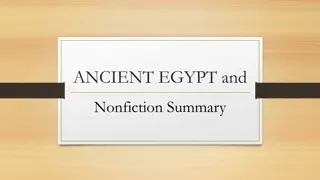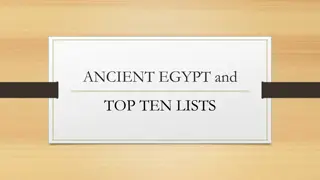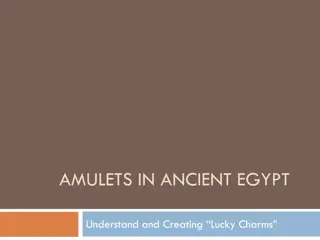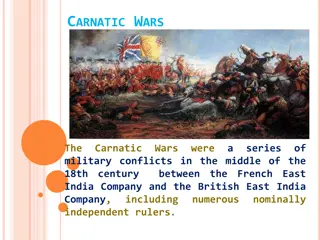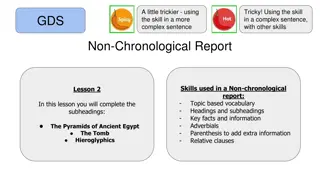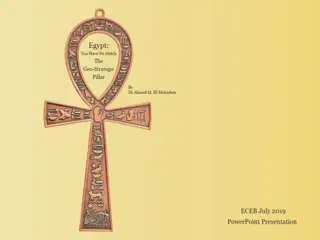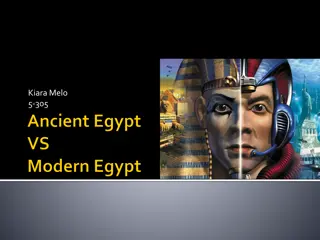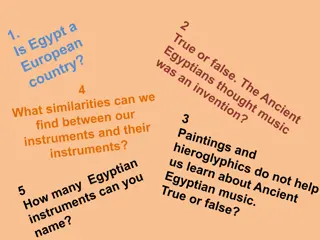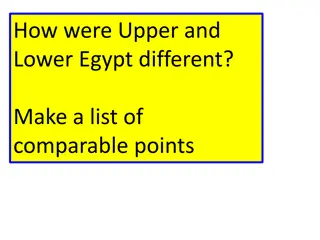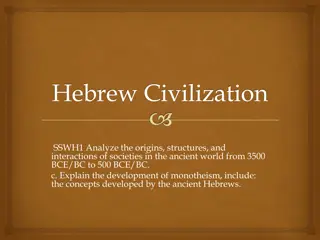Rulers of Ancient Egypt
Explore the lives and reigns of ancient Egyptian pharaohs such as Amenhotep III, Menes, Khufu, Akhenaten, Hatshepsut, and Ramses II. Discover their achievements, controversies, and impact on Egypt's history. From unifying Upper and Lower Egypt to architectural wonders like the Great Pyramid, delve into the fascinating world of these legendary rulers.
Download Presentation

Please find below an Image/Link to download the presentation.
The content on the website is provided AS IS for your information and personal use only. It may not be sold, licensed, or shared on other websites without obtaining consent from the author.If you encounter any issues during the download, it is possible that the publisher has removed the file from their server.
You are allowed to download the files provided on this website for personal or commercial use, subject to the condition that they are used lawfully. All files are the property of their respective owners.
The content on the website is provided AS IS for your information and personal use only. It may not be sold, licensed, or shared on other websites without obtaining consent from the author.
E N D
Presentation Transcript
Rulers of Ancient Egypt 3,400-year-old statue of Pharaoh Amenhotep III
Menes (Between 3100-3000BC) Successfully united Upper and Lower Egypt First pharaoh of a united Egypt (double crown) According to texts, he inherited the crown from the god, Horus. Responsible to building the city of Memphis- most fertile place in all of Egypt Double Upper Lower
Khufu (Cheops) (2551-2528 B.C.) Most famous for his construction of the Great Pyramid Not much is known about his personal life or his rule His tomb was robbed and no remains of his mummy was found.
Akhenaten (1353-1336BC) Soon after becoming pharaoh, he discarded loyalty to the highest god Amon. Changed Egypt from polytheism to monotheism Began the cult worship of the sun disk.. The Aten He closed temples and banned worship of any other gods. After he died, nearly everything associated with him was destroyed. His son, Tutankhamun brought back the old ways
Hatshepsut (1479-1458BC) Hatshepsut became a co-regent and ruled right along side the young stepson Within the second or third year of this co-regency reign, Hatshepsut proclaimed herself king Usually viewed as the most powerful female pharaoh. she tried to make herself more god-like by the invention of stories with attachment to gods she attached a false beard, wore male clothing, and was depicted in statutes as a pharaoh Her stepson took the throne after her death. It s also believed that the hatred for his stepmother pushed him to try and erase her memory.
Ramses II (1279-1213BC) There is much information about him due to his many monuments still standing today His monuments include Abu Simbel and the completion of Karnak His tomb in the Valley of the Kings is empty. Over the years it was looted and eventually destroyed. However his mummy was found. It is one of the best preserved mummies ever recovered.
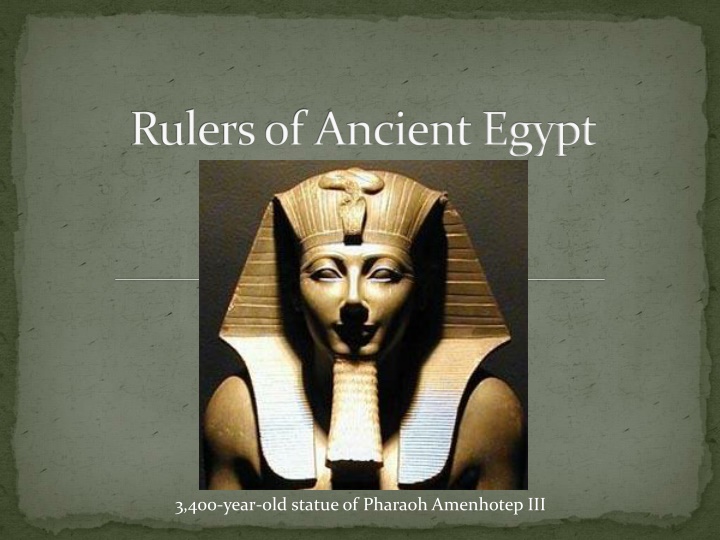

![[PDF⚡READ❤ONLINE] Tutankhamun's Trumpet: Ancient Egypt in 100 Objects from the](/thumb/20549/pdf-read-online-tutankhamun-s-trumpet-ancient-egypt-in-100-objects-from-the.jpg)
